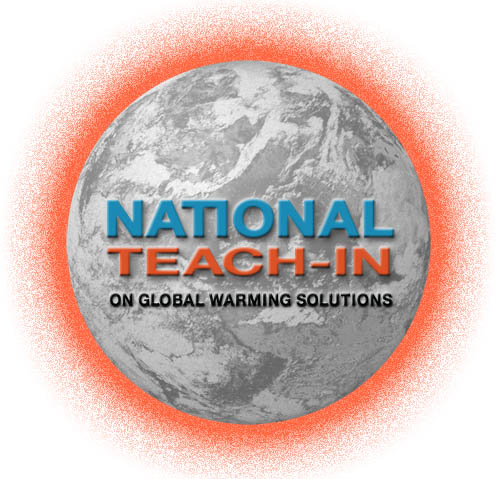RIT Joins National Teach-In on Global Warming Feb. 5
Diverse schedule of activities to showcase campus-wide discussion on climate change
Changing the conditions and policies that may alter global climate begin with broad awareness to both potential problems and opportunities for corrective action.
On Thursday, Feb. 5, Rochester Institute of Technology joins more than 1,000 colleges, universities, high schools, faith organizations and civic groups from across the country to explore all aspects of the issue during the National Teach-In on Global Warming. The initiative, organized by an ad hoc group of faculty, staff and students at RIT, allows all members of the campus community to engage in solution-driven dialogue on climate change, which is being incorporated into campus-wide activities and regularly scheduled lesson plans.
From 10 a.m. to 6 p.m., RIT’s Student Alumni Union serves as the epicenter for a variety of presentations and instructional demonstrations organized in response to the National Teach-In. Discussion topics include reducing your carbon footprint, how to organize and influence policy, and the rhetoric of global warming. Hands-on activities are also planned.
Additional highlights include a conversation on the human impact on climate change, featuring expert faculty from RIT’s College of Liberal Arts, beginning at 4 p.m. in the Liberal Arts Building, room A205. Following that panel discussion, RIT President Bill Destler presents the state of “green” programs on campus. His talk, “RIT and Global Warming: Challenges and Opportunities,” takes place at 6 p.m. in the Al Davis Room, Student Alumni Union.
The Teach-in offers a chance for those on all sides of this issue to engage in constructive dialogue,” states Destler. A complete schedule of RIT’s National Teach-In activities is available online.
The timing of the National Teach-in is intended to help shape policy recommendations related to climate change during the first 100 days of President Obama’s administration. Organizers say immediate action is required to reduce carbon dioxide levels to 350 parts per million, considered by scientists as the safe upper limit for carbon in the atmosphere, from current levels of approximately 387 ppm.
Other objectives include creating millions of green-industry jobs, revitalizing America’s economy through the development of renewable technologies, and promoting carbon-neutral power sources.
Visit the National Teach-In on Global Warming Web site for more information.














